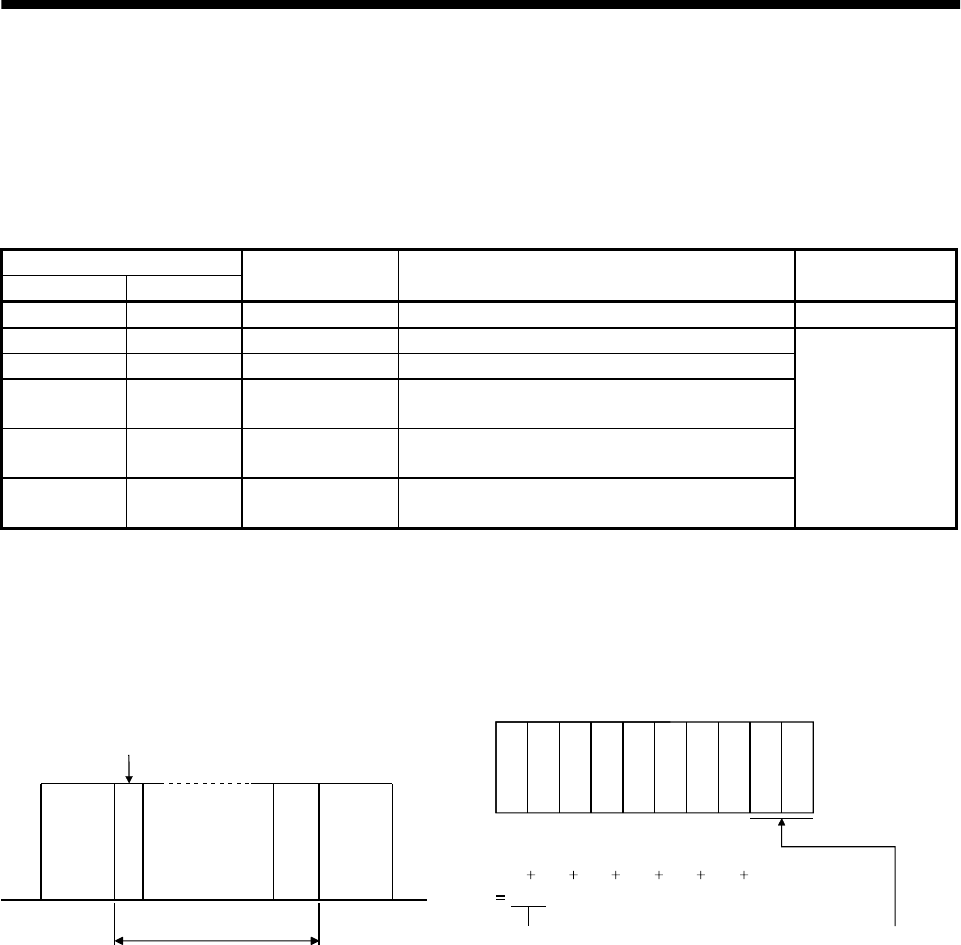
14 - 8
14. COMMUNICATION FUNCTIONS
14.5 Error codes
Error codes are used in the following cases and an error code of single-code length is transmitted.
On receipt of data from the master station, the slave station sends the error code corresponding to that
data to the master station.
The error code sent in upper case indicates that the servo is normal and the one in lower case indicates
that an alarm occurred.
Error code
Servo normal Servo alarm
Error name Description Remarks
[A] [a] Normal operation Data transmitted was processed properly. Positive response
[B] [b] Parity error Parity error occurred in the transmitted data.
[C] [c] Checksum error Checksum error occurred in the transmitted data.
[D] [d] Character error
Character not existing in the specifications was
transmitted.
[E] [e] Command error
Command not existing in the specifications was
transmitted.
[F] [f] Data No. error
Data No. not existing in the specifications was
transmitted.
Negative response
14.6 Checksum
The check sum is a ASCII-coded hexadecimal representing the lower two digits of the sum of ASCII-coded
hexadecimal numbers up to ETX, with the exception of the first control code (STX or SOH).
Check
Checksum range
ETXSTX or
SOH
Station number
S
T
X
02H
[0]
30H
[A]
41H
[1]
31H
[2]
32H
[5]
35H
[F]
46H
E
T
X
[5] [2]
03H
30H 41H 31H 32H 35H 46H 03H
152H
(Example)
Lower 2 digits 52 is sent after conversion into ASCII code [5][2].


















